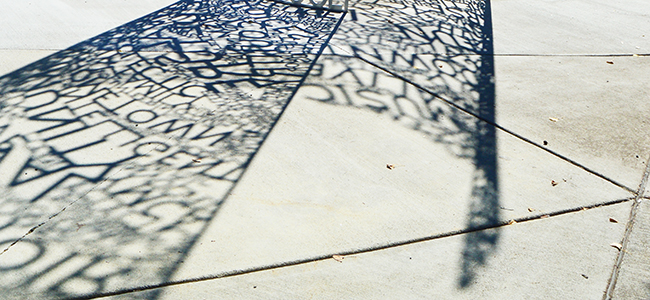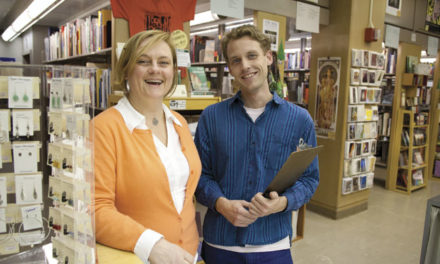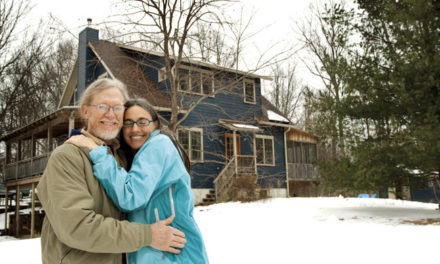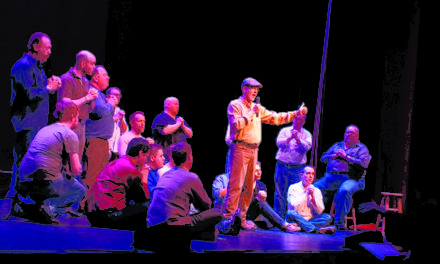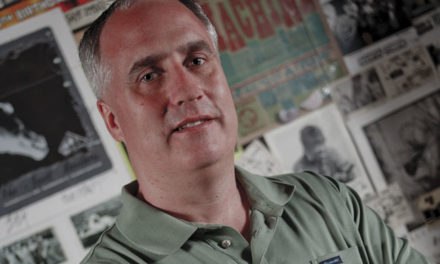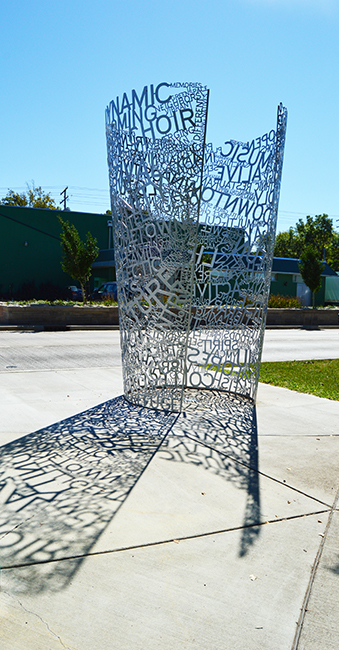
BY KATHY JONAS
(C)olumn, the 13-foot-tall steel sculpture at the corner of South Walnut and West 2nd streets, is an intricate configuration of words and phrases that describe Bloomington. It’s not a random collection. Each word or phrase was submitted online by members of the community in 2014, presented on a website for public viewing, and ranked to show how many times it had been submitted.
“It was very important to look at the way people value Bloomington as a community,” says Jiangmei Wu, who, along with Jon Racek, created the public sculpture. “The idea was almost to look out through the words and see Bloomington in a different light,” she says.
Some of the the words and phrases found on the sculpture include “Hoagy,” “diverse,” “under construction,” “curious,” “sanitized,” and “home cuisine.” Racek says he and Wu did not edit the words, wanting them to represent a moment in time.
The “C” in the name (C)olumn stands for community, culture, and the actual shape of the artwork when viewed from above. Those viewing the sculpture can walk inside just as if walking inside a little room, Wu notes.
Racek and Wu, faculty members in Indiana University’s Department of Apparel Merchandising and Interior Design, were commissioned by the City of Bloomington’s Percentage for the Arts program to design a work of public art that would serve as a gateway into the Bloomington Entertainment and Arts District as well as enhance the streetscape near Seminary Square Park, according to Miah Michaelsen, who was Bloomington’s assistant economic development director for the arts at the time the sculpture was commissioned and completed. Michaelsen says the city set aside $25,000 for the sculpture when the streetscape was completed.
Racek explains that the process of creating the structure included mapping the text on five pieces of cold-rolled steel, piecing the words together to make sure they connected and were strong enough, testing the structure, and then having the fabricator, Poynter Sheet Metal of Greenwood, Indiana, laser cut the steel.
Racek, who recently returned from a trip to Tanzania as part of a nonprofit effort helping communities build play structures, says his work explores the idea of participatory community design. “I’m interested in setting up parameters and letting the process work,” he says. “We hope for the best and are never sure exactly what we’re going to get.”


